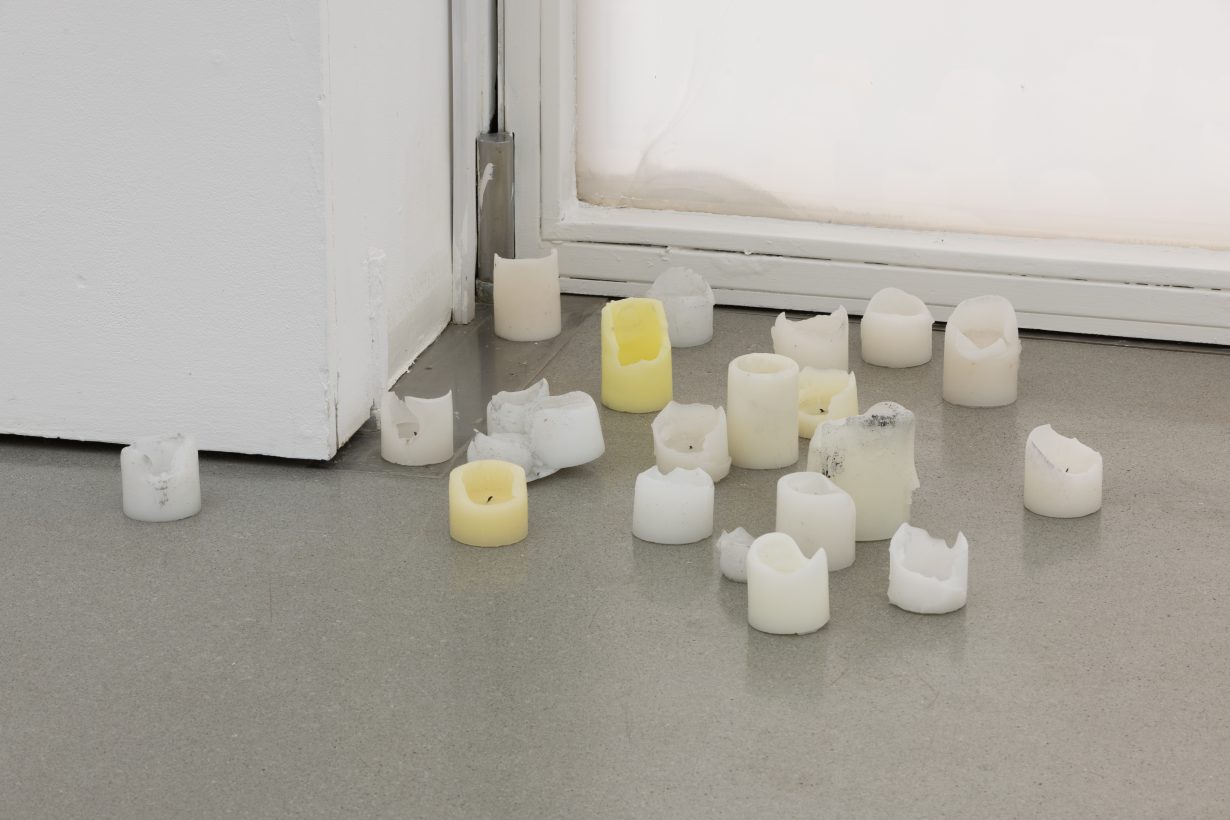
An exhibition at Henry Moore Institute recasts failure as potential
Birth of Venus (2010) is a square white pedestal large enough to display a lifesize sculpture of, say, the birth of Venus, but which supports instead only a square piece of duct tape and a patina of scrapes and scuffs. Placed in the corner of a room in Hany Armanious’s solo exhibition at the recently refurbished and relaunched Henry Moore Institute, it would be easy enough to overlook were it not for the company it keeps. This includes two plastic paint-trays bearing a residue of white paint; a semi-carved block of marble, with an empty jar beside it; and a picture frame and its pane of glass leaning separately against the wall. None of these objects is what it appears to be. All – glass, marble and duct tape included – are realistic polyurethane resin casts of existing objects. Like Vija Celmins’s painted bronze reproductions of found pebbles (To Fix the Image in Memory, 1977–82) or Robert Gober’s handmade doughnuts, guns and apples, Armanious’s work sits in a tradition of the double-take readymade, restaging the found-object tradition by way of the illusionism it purported to refute.
Birth of Venus’s empty plinth articulates Armanious’s relationship to that history. His objects reflect upon the language of sculpture, probing at the transformative processes by which one thing becomes something else. Dried leaves spill out of a polystyrene box (Image, 2023); a frayed ping-pong bat sits on a row of corks (Moth, 2020); a cluster of crayons is swaddled in rope (Mumble, 2023). Preservation, elevation, containment. These actions, reenacted in perfect casts, articulate the basic premises of artmaking. Their holding still of small shifts in objecthood nudge their viewers’ thoughts towards the playfulness of sculptural practice, embodied in the work Want (2023). Eight objects rest on a concrete tray, each a makeshift magic wand: a rod jammed into a polystyrene ball; a nubbly stick; a wooden spoon carved into a star. The double duty of its title pares the sculptural process down to a ludic reorientation of ordinary things. I want this to be a wand, and so it is one. Armanious’s casting process repeats this simple desire via complex means. I want a stone to be soup. I want this to be that.
Titles are transformations too. Frequently Asked Questions (2015) is a cast of a cluster of extinguished candles, melted almost down to the ground, which are grouped at the edge of the exhibition space, like the residue of a séance. Frequently asked of Armanious’s work is its relationship to reality – is that glass really glass? Is it really not real? – but it also asks questions of the investment of faith we all bring to the art encounter. (The candles’ suggestion of religious ritual steers us in this direction, too.) The exhibition’s effect of abandonment invokes art spaces (studios, art schools) emptied of their makers, false starts littering the ground. Yet Armanious’s practice literally recasts failure as potential, and the act of making art as a kind of magic you have to see to (almost) believe.
Stone Soup is at Henry Moore Institute, Leeds 12 July – 3 November